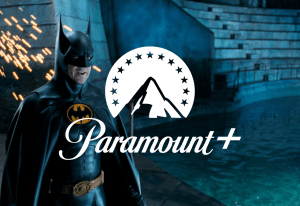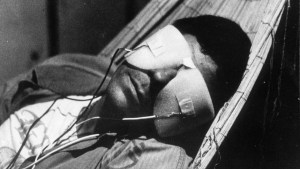Based on its title and given director Guillermo del Toro’s history, it’s easy to head into Nightmare Alley anticipating an unrelenting descent into horrifying imagery, but for those familiar with the original 1947 movie, you know that the darkness is more evident in the hearts of the characters than in the world around them. Despite this journey potentially being somewhat unexpected for del Toro devotees, it also tracks perfectly with his entire career, which fails to be defined or categorized into one specific realm. Even with some overall pacing issues, Nightmare Alley and its embrace of noirish storytelling, gothic set design, and captivating performances from the entire ensemble prove that there’s no narrative arena that del Toro can’t put his unique stamp on while highlighting the highs and lows of the human condition.
Videos by ComicBook.com
A man with a mysterious past, Stanton (Bradley Cooper) finds himself joining a carnival, first carrying out menial tasks before taking an interest not only in a mentalism performance, but also in fellow performer Molly (Rooney Mara). As his “abilities” grow stronger, psychiatrist Lilith (Cate Blanchett) presents him with a unique opportunity to put his skills to the test, though the opportunity could come with deadly consequences.
The stories that del Toro has been telling over the years might be relatively diverse in their subject matter, tackling worlds of fantasy, horror, and romance, one pattern that becomes apparent is that he always manages to enlist compelling and unexpected performers to join complex ensembles, with Nightmare Alley arguably being the strongest example of impeccable casting. Not only do Cooper, Mara, and Blanchett feel born to play their roles in this ’40s-era neo-noir, but the supporting cast also all feel like they were destined to embody these figures. Ron Perlman as a strongman, Willem Dafoe as a barker, and Toni Collette as a mystic are all casting decisions that feel almost too perfect, with there still being a number of other exceptional performances that ensure every single member of the ensemble is bringing their A-game. This serves not only as a testament to del Toro’s attention to detail in bringing this story to life, but also shows just how many acclaimed performers want to get into the del Toro business.
Despite not being overtly horrifying, del Toro does manage to evoke a sense of unease through the production design. The carnival sequences feel lived-in and authentic, using impeccable sets to mirror the twisted nature of Stanton’s agenda. We witness the traditional staples of these locations without ever feeling like they are clichés, as del Toro’s camera finds ways to offer new perspectives of familiar settings. This brilliance continues when we travel to more urban locations, with sequences in office settings, palatial estates, or city streets all being precisely crafted and framed in ways that almost make you forget about the human characters within these frames because of the gorgeous cinematography. Much like del Toro ensures every performer is perfect for their role, it’s clear nothing in any shot is there accidentally or unintentionally.
It’s obvious that del Toro loved spending time in these worlds that he and his team created, though it’s how much time we spend in the world of Nightmare Alley that ends up working against it. Every actor in the film is at the top of their game, with the audience being enraptured by every exchange of dialogue, no matter how mundane, yet by the time we reach the third act, we begin to realize how thin the overall plot actually is. This isn’t a slight to the plot, as there’s not one scene that should necessarily have been scrapped, but the nature of many noir films is that their stories are pulpy crime-thrillers, almost to the point of being disposable or somewhat predictable, yet these tropes are often blended in ways that still result in an unexpected conclusion. Nightmare Alley both visually and narratively checks all the boxes of being a neo-noir, yet it doesn’t have quite enough substance to justify its bloated run time. Especially in that last hour, it feels as though we’re about to see a conclusion, only for multiple more sequences to unfold. It’s possible this is meant to hammer home the point of the characters’ misguided intentions and the price they pay for them, and even if each of these scenes is still engaging, there’s no denying how exhausting it feels.
Del Toro’s earlier efforts align more closely with horror sensibilities, as films like Pan’s Labyrinth, Crimson Peak, and The Shape of Water have allowed him the opportunity to tackle richer themes and genres, while never turning their nose up at genre sensibilities. Nightmare Alley continues that trend, offering up a gritty and grimy cautionary tale of the costs of exploitation with lavish visuals, devilishly endearing performances, and striking scenes of violence. A tighter run time with a more urgent narrative momentum would have served the experience much better, but del Toro continues to surprise and delight with any cinematic subgenre he steps foot in.
Rating: 4 out of 5
Nightmare Alley hits theaters on December 17th.








